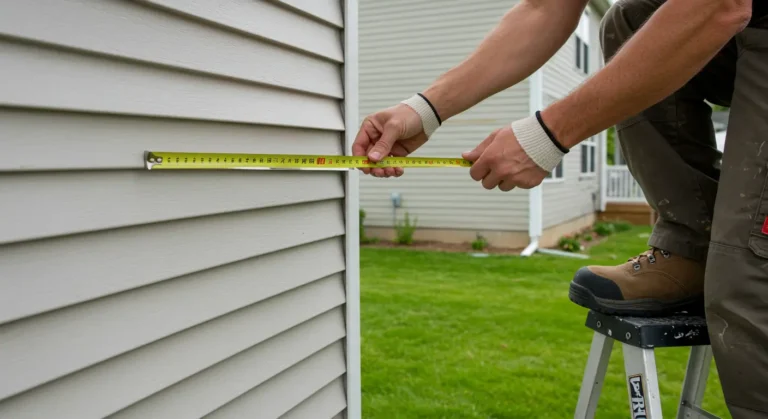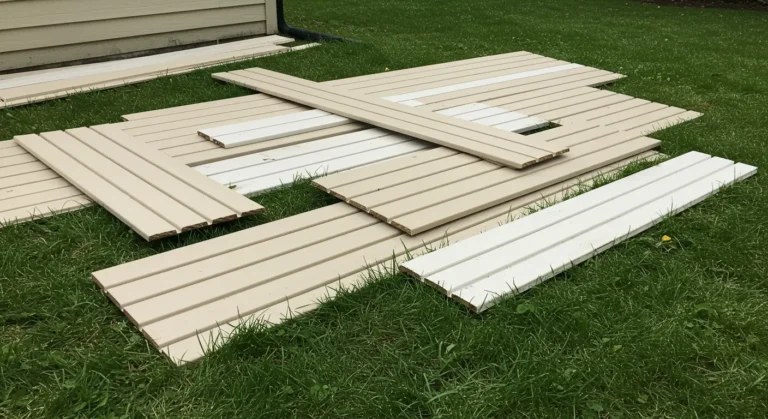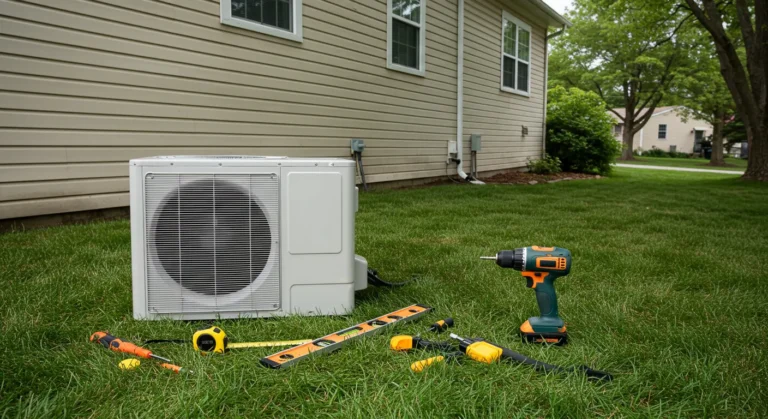Keeping your vinyl siding clean isn’t just about appearances; it’s essential maintenance. In humid or storm-prone climates, dirty siding can harbor mold, mildew, and grime that degrade your home’s exterior over time. Whether you’re a first-time homeowner or a seasoned DIYer, knowing how to clean vinyl siding the right way can save money, extend its lifespan, and boost curb appeal.
In this guide, you’ll learn safe, effective, and eco-conscious methods to clean your siding, plus how to know when it’s time to call in the pros.
Why Vinyl Siding Gets Dirty and What’s at Risk
Even though vinyl siding is low-maintenance compared to wood or stucco, it’s still exposed to the elements 24/7. Here’s what you’re up against.
Common Causes of Dirty Vinyl Siding
- Mold and mildew – Thrive in shaded, damp areas.
- Pollen and dust – Wind-blown particles settle and cling to siding.
- Pollution – Urban areas see more soot, vehicle exhaust, and industrial grime.
- Bird and insect debris – Can stain and attract further pests.
- Irrigation spray – Can leave hard water spots and promote algae growth.
If your home is near trees, a garden, or a busy road, you’re even more likely to see buildup over time.
What Happens if You Don’t Clean It?
- Permanent discoloration from embedded stains
- Warped or cracked siding due to trapped moisture and mold growth
- Reduced home value and loss of curb appeal
- Health risks from mold spores and allergens, especially if windows are open
Neglecting your siding could turn a small cleaning job into a costly replacement. For signs of deeper issues, explore vinyl siding repair.
Essential Tools and Safety Gear for Cleaning
Before you grab the hose, make sure you have the right equipment on hand to clean effectively and safely.
Tools You’ll Need
- Garden hose with a spray nozzle
- Soft-bristle brush or siding cleaning brush with extension pole
- Buckets for mixing cleaning solutions
- Pump sprayer (optional) for even application of cleaning solution
- Ladder for two-story homes (always use ladder stabilizers)
Safety Gear
- Rubber gloves to protect hands from irritants
- Safety goggles to shield eyes from debris and spray
- Non-slip shoes or boots, especially on wet surfaces
- Protective clothing: avoid getting cleaners on your skin
For safety and thoroughness, work from bottom to top when applying cleaner, and rinse from top to bottom to prevent streaking.
DIY Cleaning Methods: Natural & Store-Bought
Cleaning your vinyl siding doesn’t require harsh chemicals. In fact, natural solutions often work just as well and are safer for pets, plants, and your family.
- Vinegar Solution: A Natural Favorite
This eco-friendly method is budget-friendly and powerful against mold and mildew.
Recipe:
- 1 gallon of water
- 2 cups of white vinegar
Spray or sponge the solution onto siding, let it sit for 5 – 10 minutes, then scrub gently and rinse with your garden hose.
- Baking Soda Paste for Spot Cleaning
Tough stains like bird droppings or algae patches may need a little abrasion.
Recipe:
- Mix baking soda with a small amount of water to form a paste
- Apply to the stain, scrub with a brush, and rinse
Avoid excessive pressure, especially on aged or brittle siding.
- Dish Soap & Warm Water: Everyday Cleaning
Great for general grime or post-storm debris.
Recipe:
- 1/3 cup dish soap
- 1 gallon of warm water
Apply with a sponge or sprayer, scrub if needed, and rinse well.
- Store-Bought Eco-Cleaners
If DIY isn’t your style, there are many safe and effective vinyl siding cleaners on the market. Look for Safer Choice-certified products that are biodegradable and free of phosphates.
Pro Tip: Refer to this Better Homes & Gardens guide to better understand green product labels.
Using a Pressure Washer on Vinyl Siding
Pressure washing vinyl siding can make your job easier if done carefully. It’s powerful but can damage siding if misused.
When It’s Safe to Use a Pressure Washer
- Siding is securely attached and in good condition
- You have access to proper nozzle attachments
- You’re experienced or have practiced on a less visible section
Avoid pressure washing if your siding is old, cracked, or has open seams. Water intrusion behind panels can lead to mold growth and insulation damage.
Recommended Settings
- Use a fan tip (40-degree nozzle)
- Set PSI between 1,300 and 1,600
- Hold wand at least 12 inches from the surface
- Spray at a 45° downward angle
Never aim directly upward under the siding or spray windows, light fixtures, or vents.
Pressure Washing Mistakes to Avoid
- Using a narrow jet nozzle (can puncture siding)
- Overlapping joints with direct spray
- Letting water seep behind the panels
- Using bleach in a pressure washer (can damage internal seals)
If you’re unsure, play it safe with manual cleaning or consult a pro.
Cleaning Vinyl Siding Without a Pressure Washer
Don’t own a pressure washer? No problem. Cleaning by hand or with a hose attachment can be just as effective with the right approach.
Tools for No-Pressure Cleaning
- Long-handled brush or soft broom
- Pump sprayer for even cleaner application
- Siding cleaning brush with extension pole
- Regular garden hose with a spray attachment
Method
- Spray siding with water to remove loose debris
- Apply your cleaning solution from bottom to top
- Let sit 5 – 10 minutes
- Scrub gently
- Rinse from top to bottom to avoid streaks
Eco-Friendly Siding Cleaning Solutions
- Vinegar + water (safe for pets and plants)
- Castile soap + warm water
- Commercial biodegradable siding cleaners (look for certifications)
Avoid ammonia, acetone, or solvent-based cleaners, which can cause fading or damage.
Seasonal and Winter Cleaning Tips
Cleaning your siding isn’t a one-and-done task. Here’s how to maintain it through the seasons.
Spring
- Rinse off winter grime and salt
- Check for mold or mildew in shaded areas
- Inspect siding after storm season
Summer
- Remove pollen, insects, and sap
- Clean before heat sets in stains
- Use early mornings to avoid sun drying out cleaning solution
Fall
- Remove leaves, cobwebs, and debris
- Clear gutters to prevent overflow stains
- Prep siding for winter storms
Winter
Yes, you can clean in winter: just follow these precautions:
- Choose a dry, mild day (above freezing)
- Use warm water, not hot
- Focus on spot cleaning, especially near entryways and vents
- Wear insulated non-slip gear
For homes in cold or humid climates, seasonal maintenance is essential for long-term vinyl siding maintenance.
When to Call a Professional
While many homeowners can handle cleaning themselves, some situations warrant expert attention. Consider professional siding installation or repairs if you notice:
- Stains that return quickly after cleaning
- Sagging, cracked, or loose panels
- Color fading that doesn’t respond to cleaning
- Leaks or drafts inside your home
Pros have access to industrial-grade cleaners and tools that can safely restore your siding’s appearance and spot early signs of structural issues.
Don’t guess. Book a Free Siding Inspection Today to stay ahead of problems.
Conclusion: Clean Siding = A Cleaner, Healthier Home
Regular siding cleaning is one of the easiest ways to maintain your home’s beauty and protect your investment. Whether you prefer a DIY vinegar solution or professional help, make it a habit to inspect and clean your siding seasonally.
Basic Siding Cleaning Schedule:
- Inspect every 3 months
- Clean at least once or twice a year
- Treat stains immediately
- Call a pro if cleaning doesn’t restore appearance
After every cleaning, step back and assess: Is your siding holding up well? Are there areas needing attention? If so, consider vinyl siding repair before small issues grow bigger.
FAQs About Cleaning Vinyl Siding
What is the best thing to clean vinyl siding with?
For everyday cleaning, a mix of white vinegar and water is one of the best solutions. It’s affordable, safe, and effective on mildew and algae. For tougher stains, consider a biodegradable store-bought cleaner.
Can you clean siding without a pressure washer?
Yes! A garden hose, soft brush, and a natural cleaning solution like vinegar or dish soap will get the job done. This method is gentler and better for older or delicate siding.
Is bleach safe to use on vinyl siding?
Bleach can work in diluted form, but it’s not recommended regularly. It can damage plants, cause siding discoloration, and release harmful fumes. Opt for a safer cleaner from the Safer Choice list.
How often should I clean my siding?
Clean your siding at least once a year, preferably in spring or fall. If your home is surrounded by trees, near the ocean, or in a humid climate, aim for twice a year.
Ready to Restore Your Home’s Exterior?
Don’t wait for mold or stains to spread.
Book a Free Siding Inspection Today and let Lone Wolf Siding help you protect and beautify your home.




